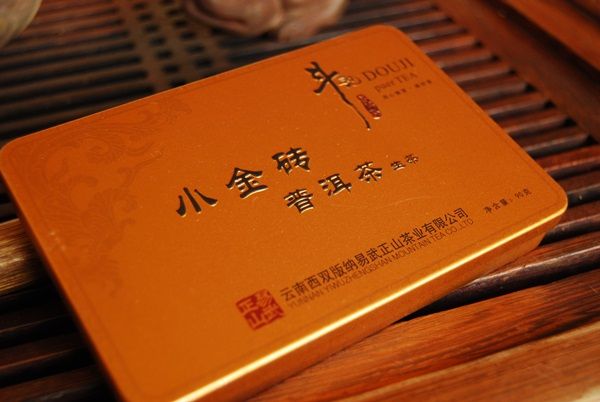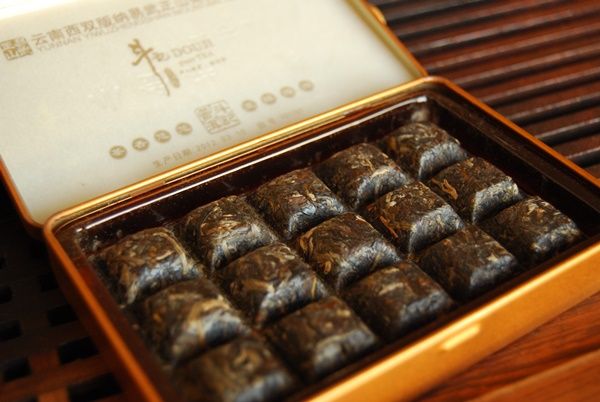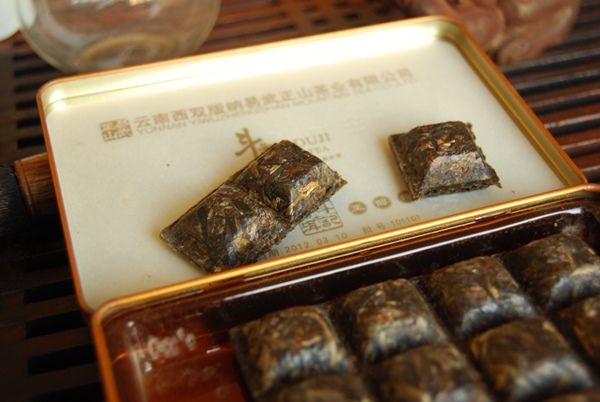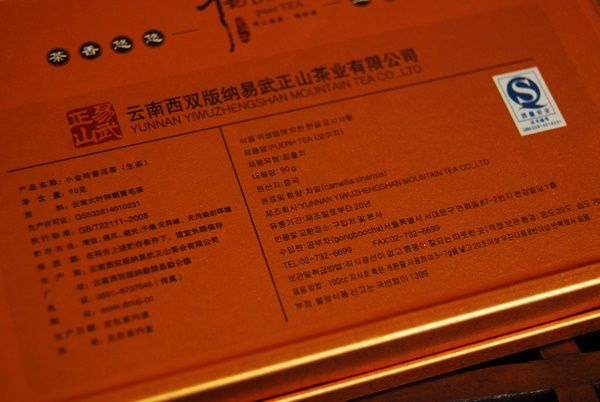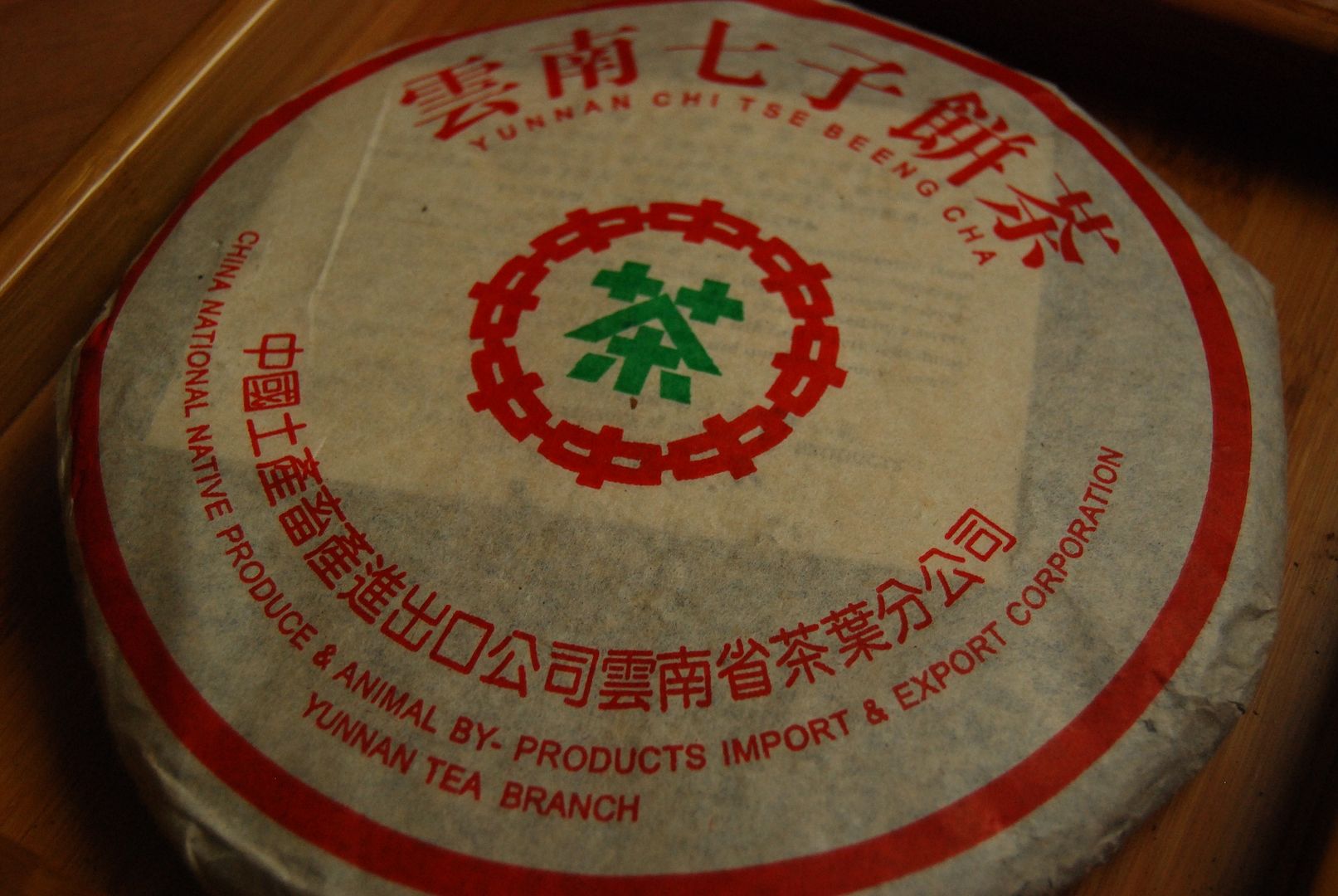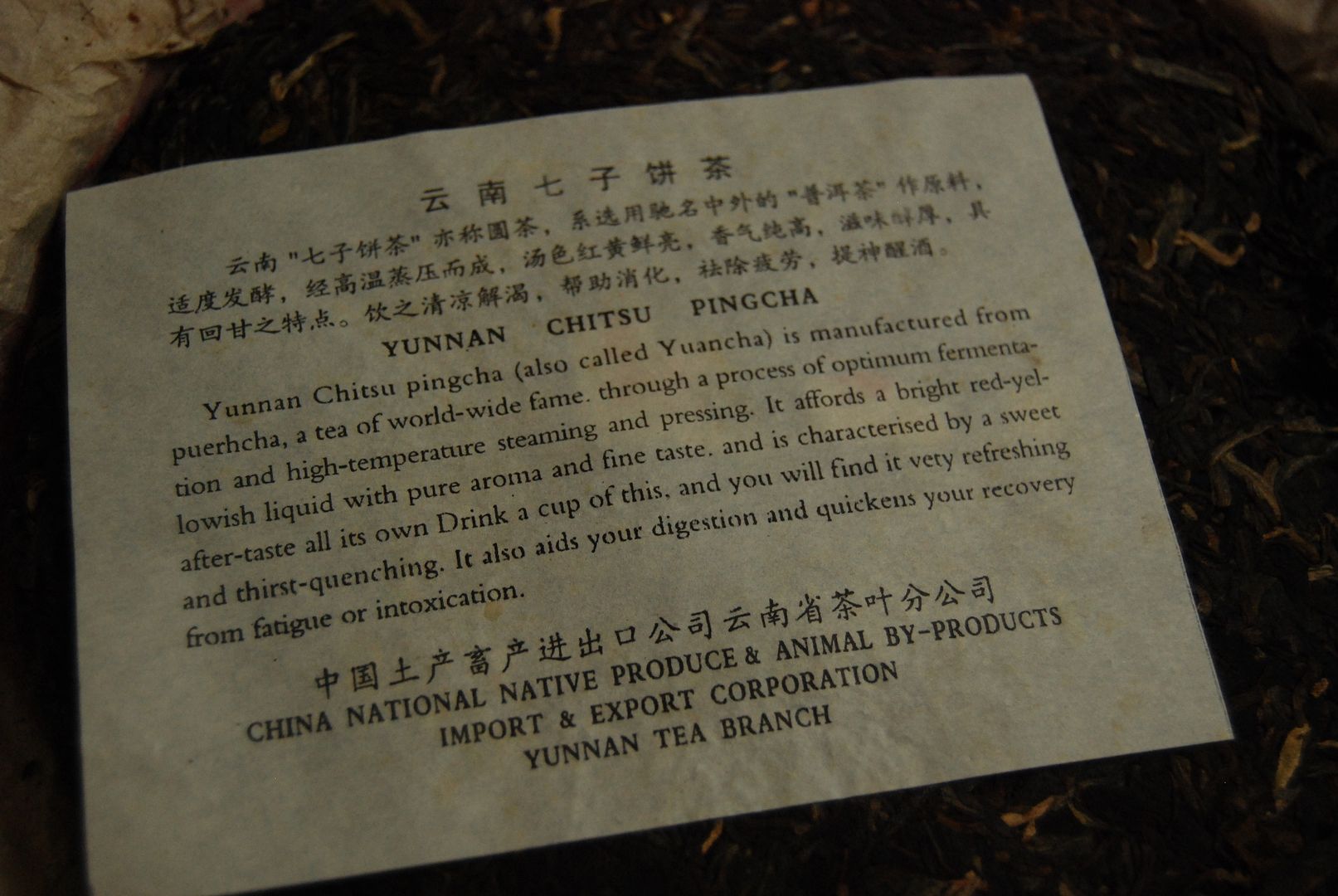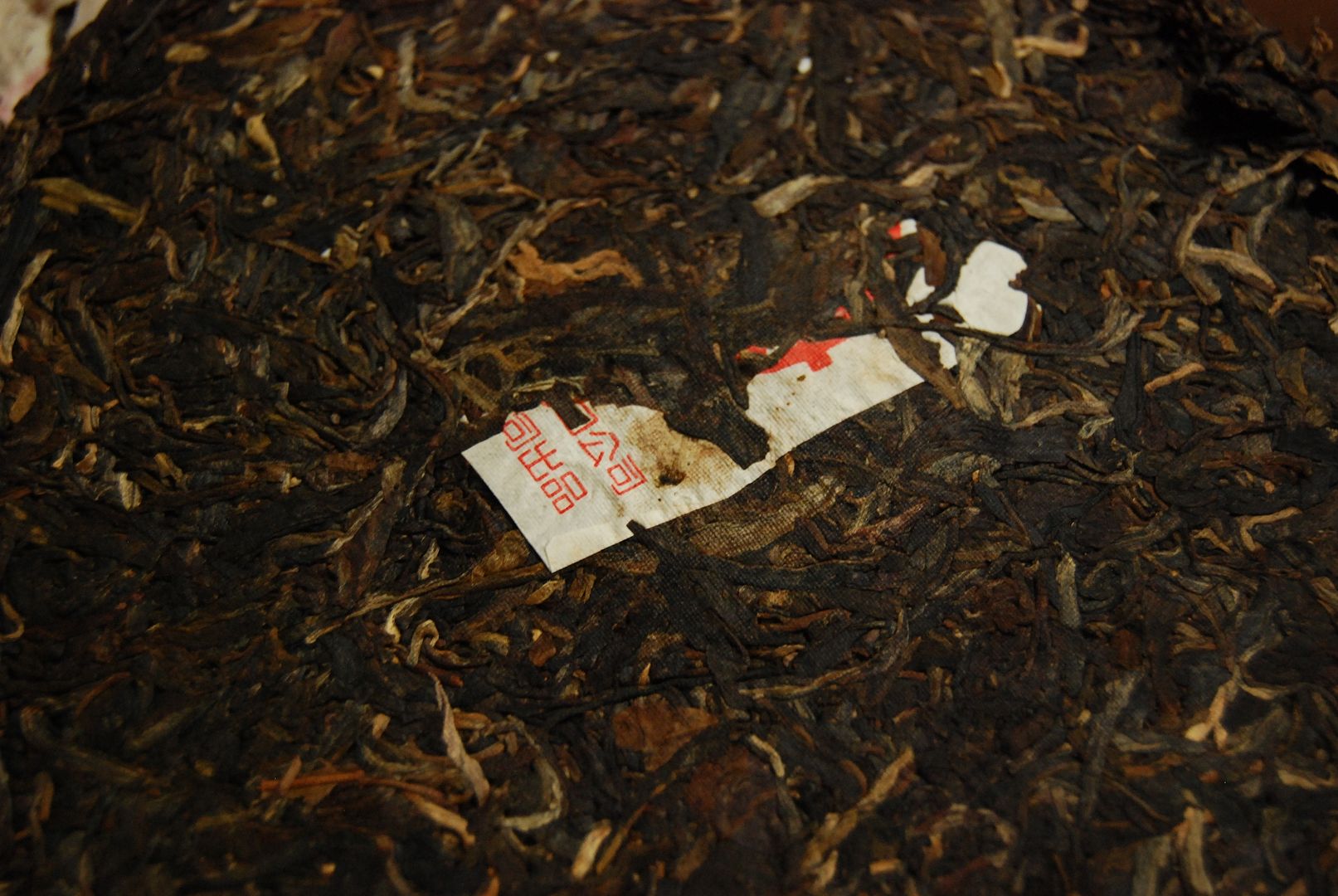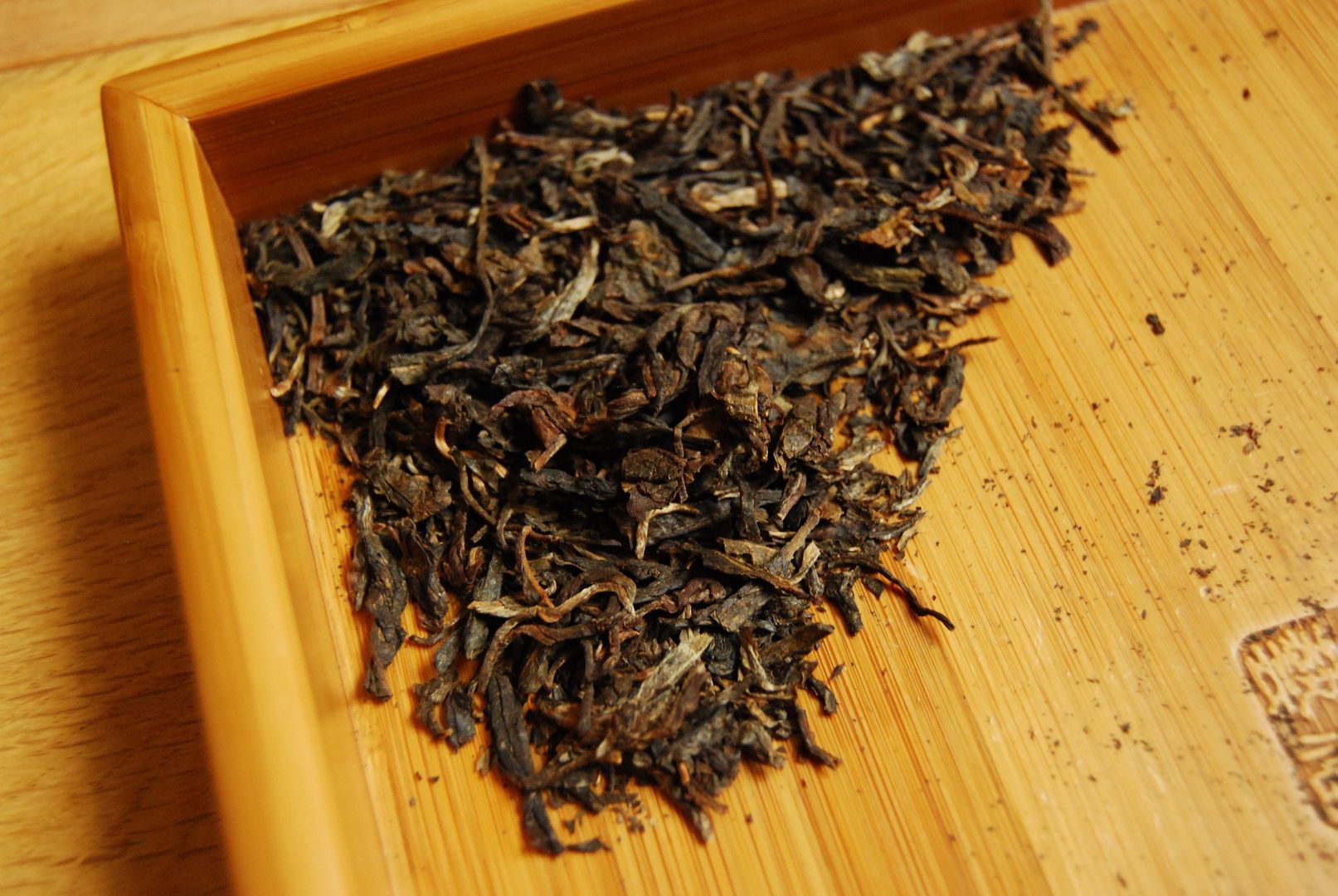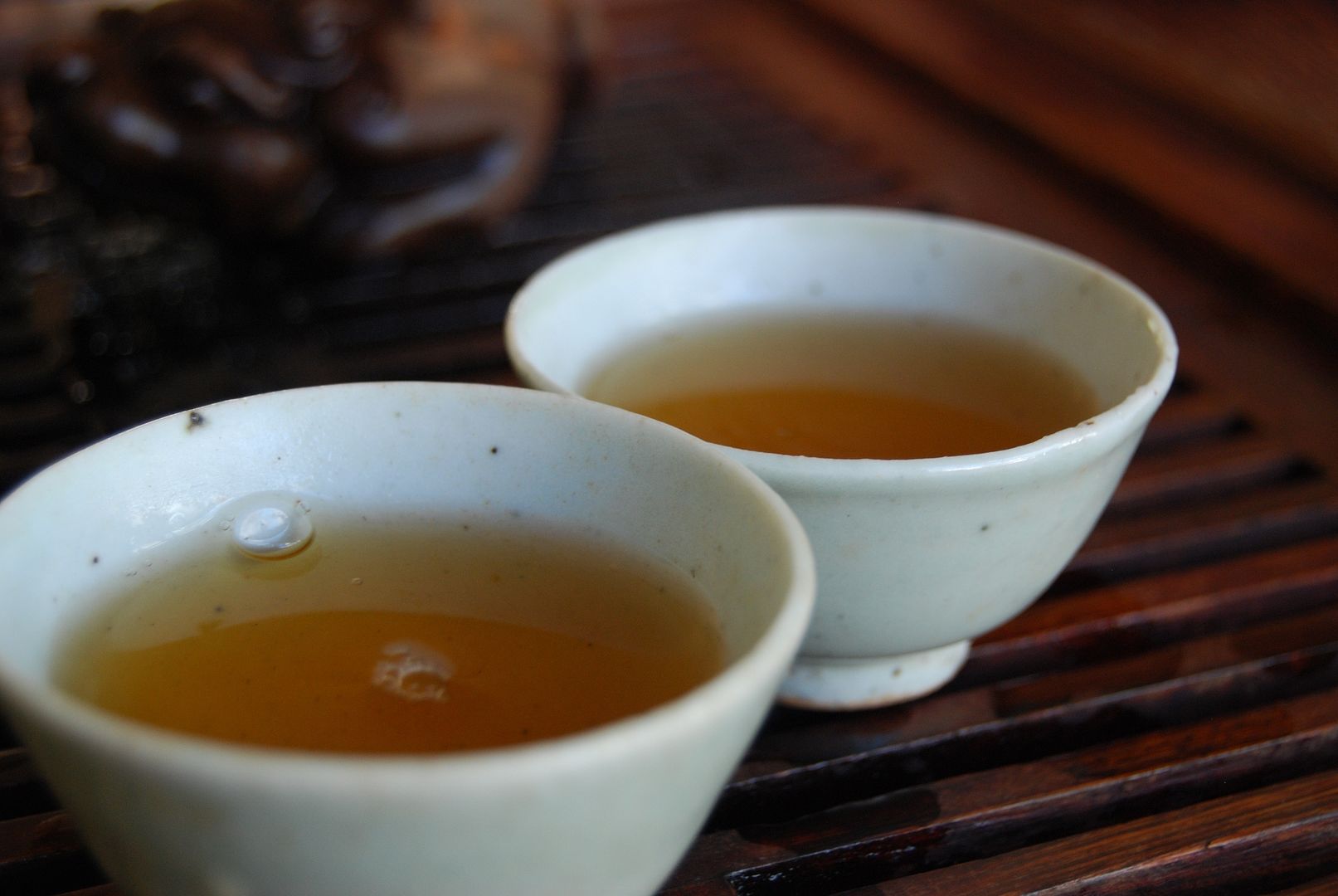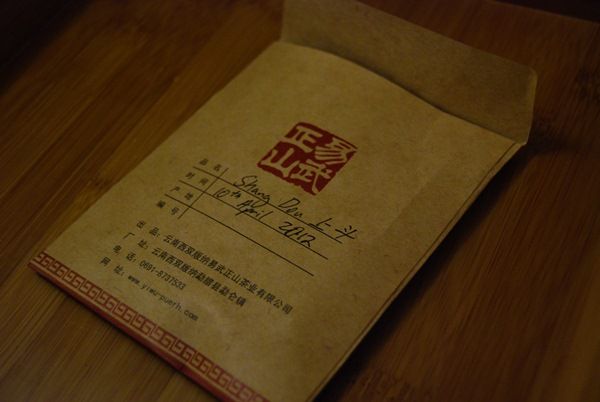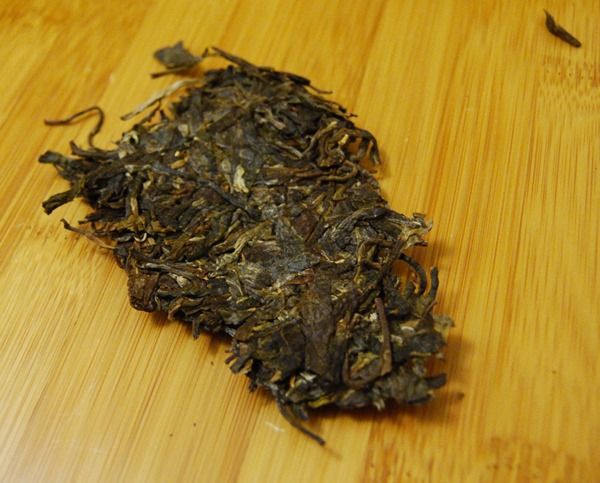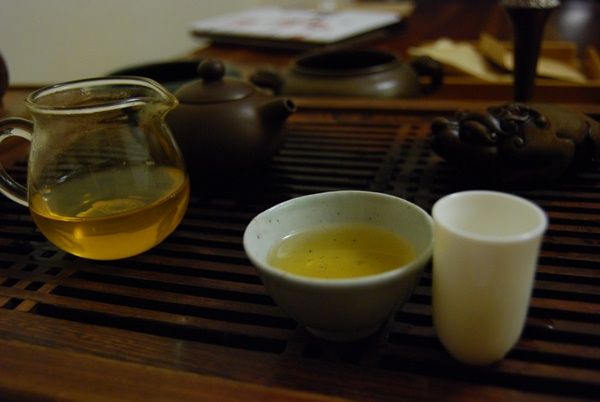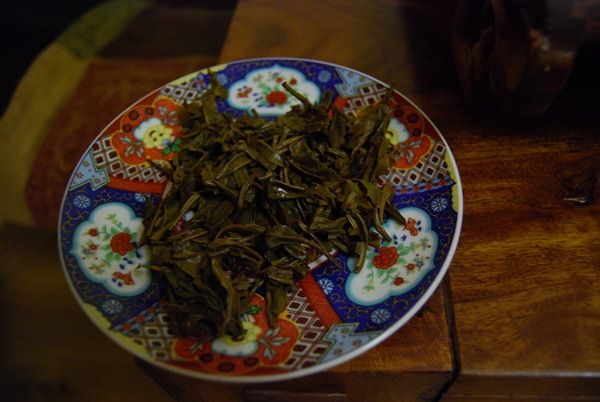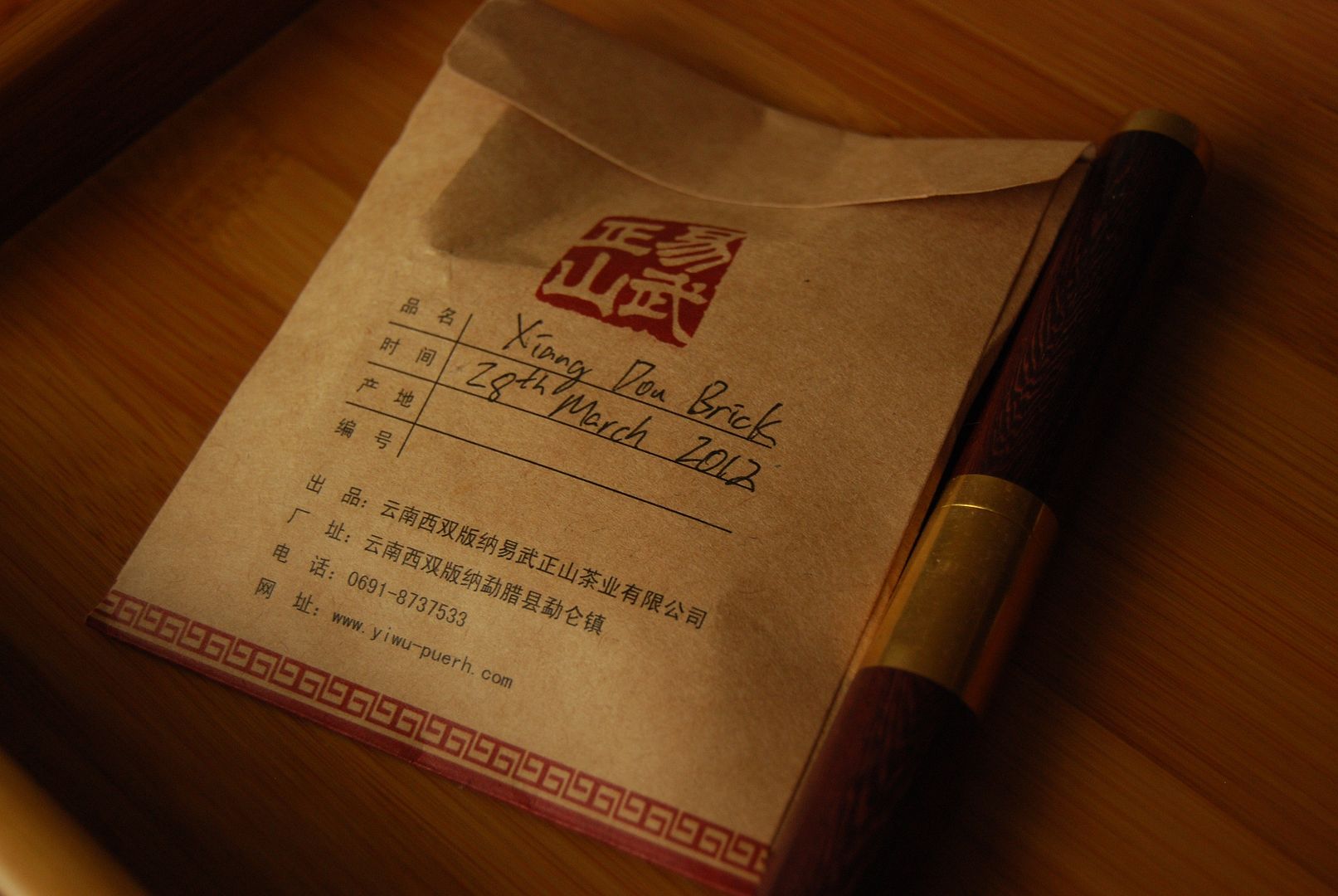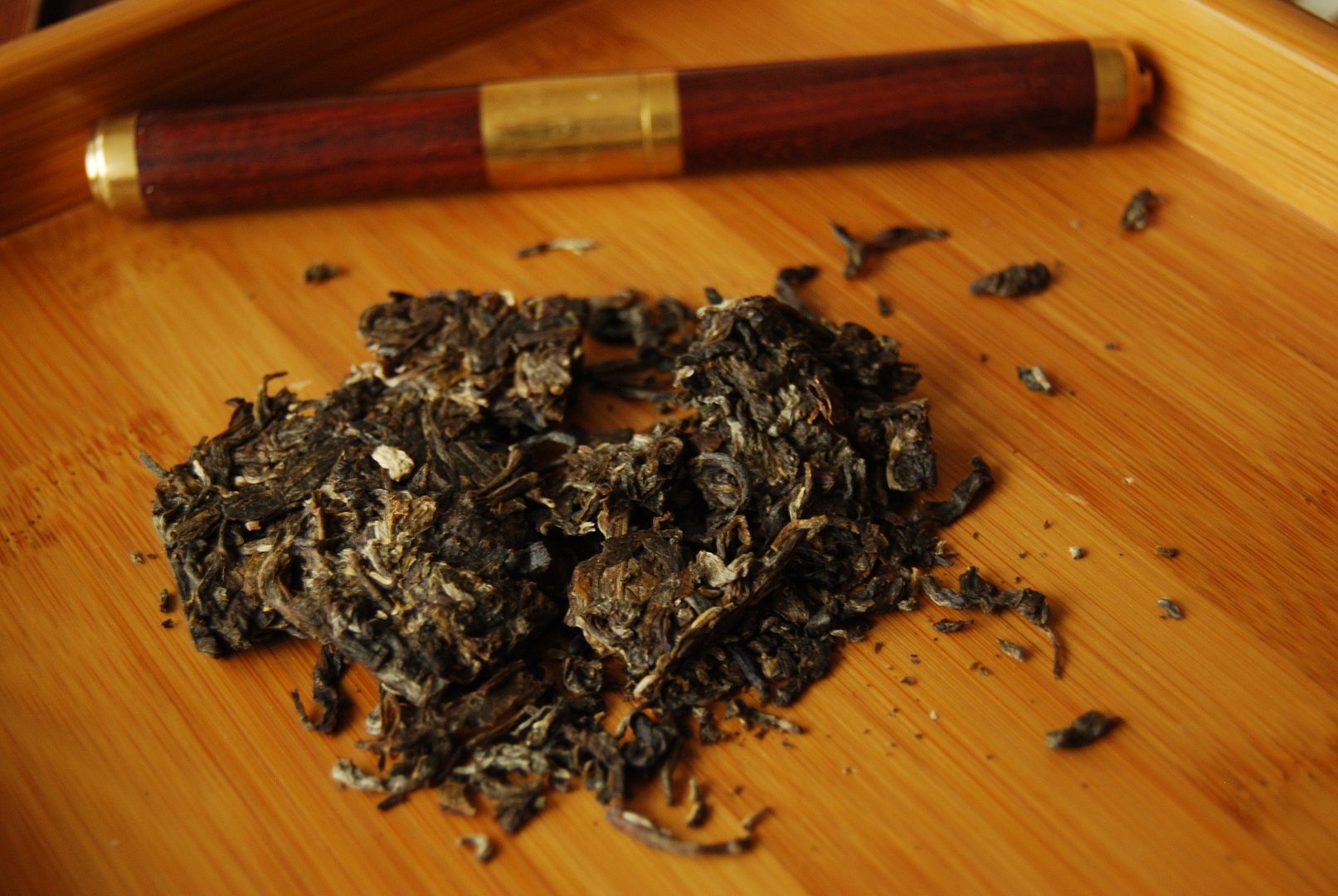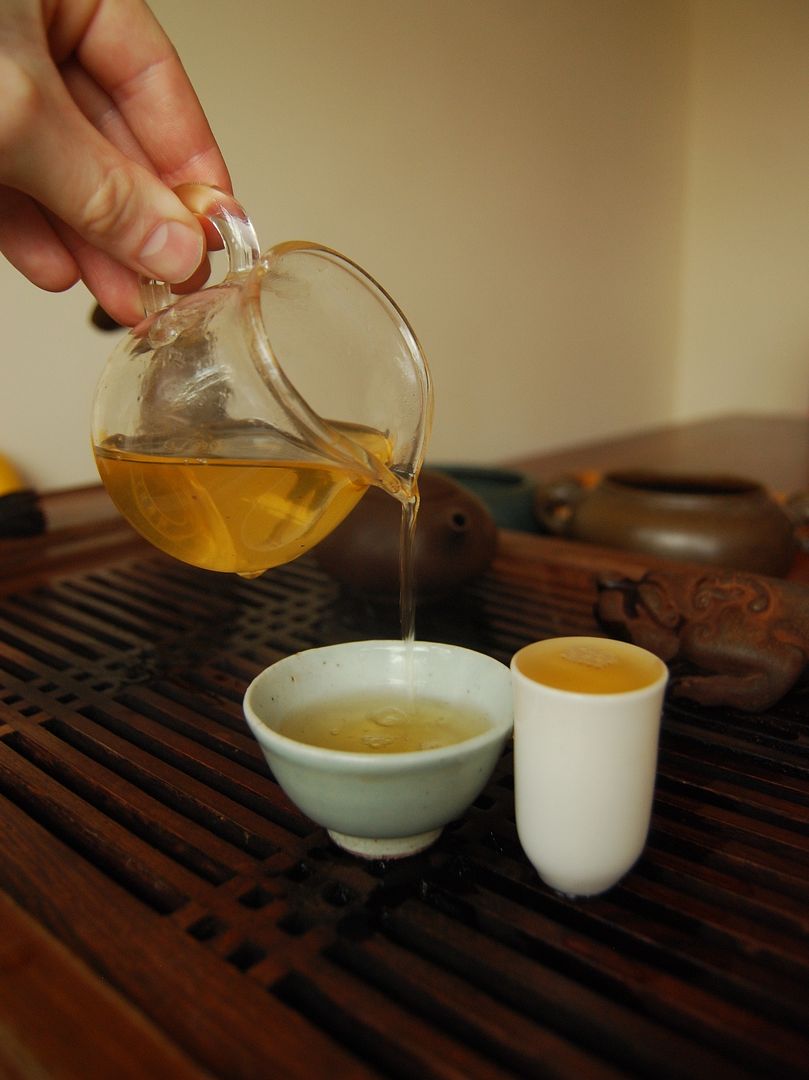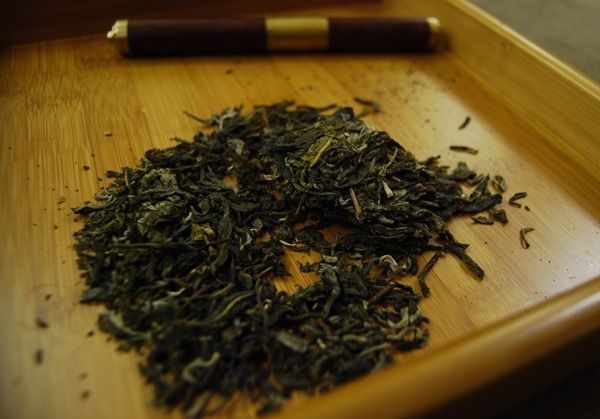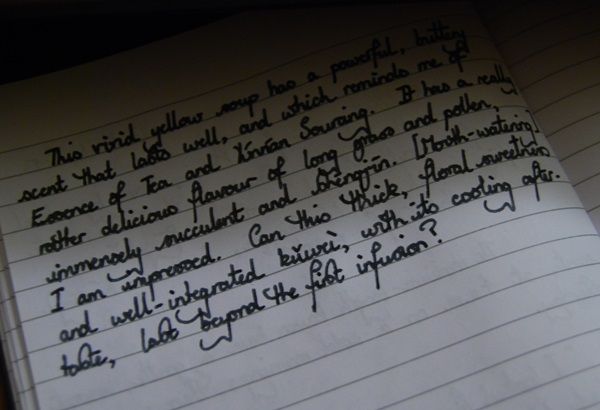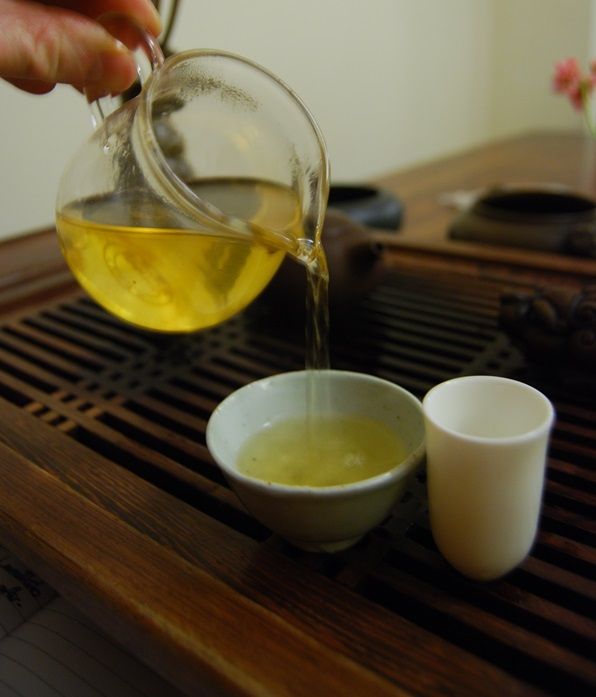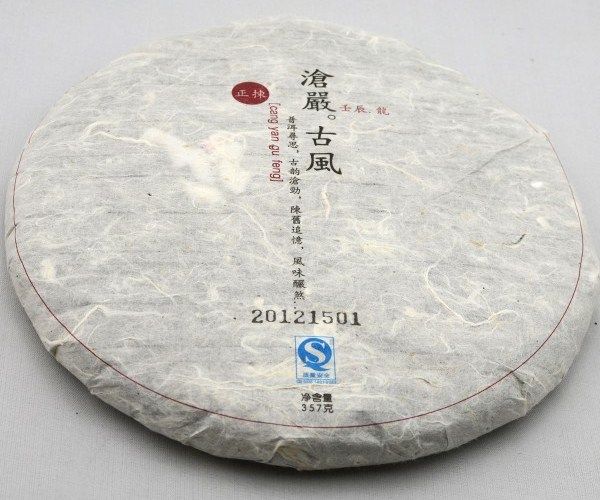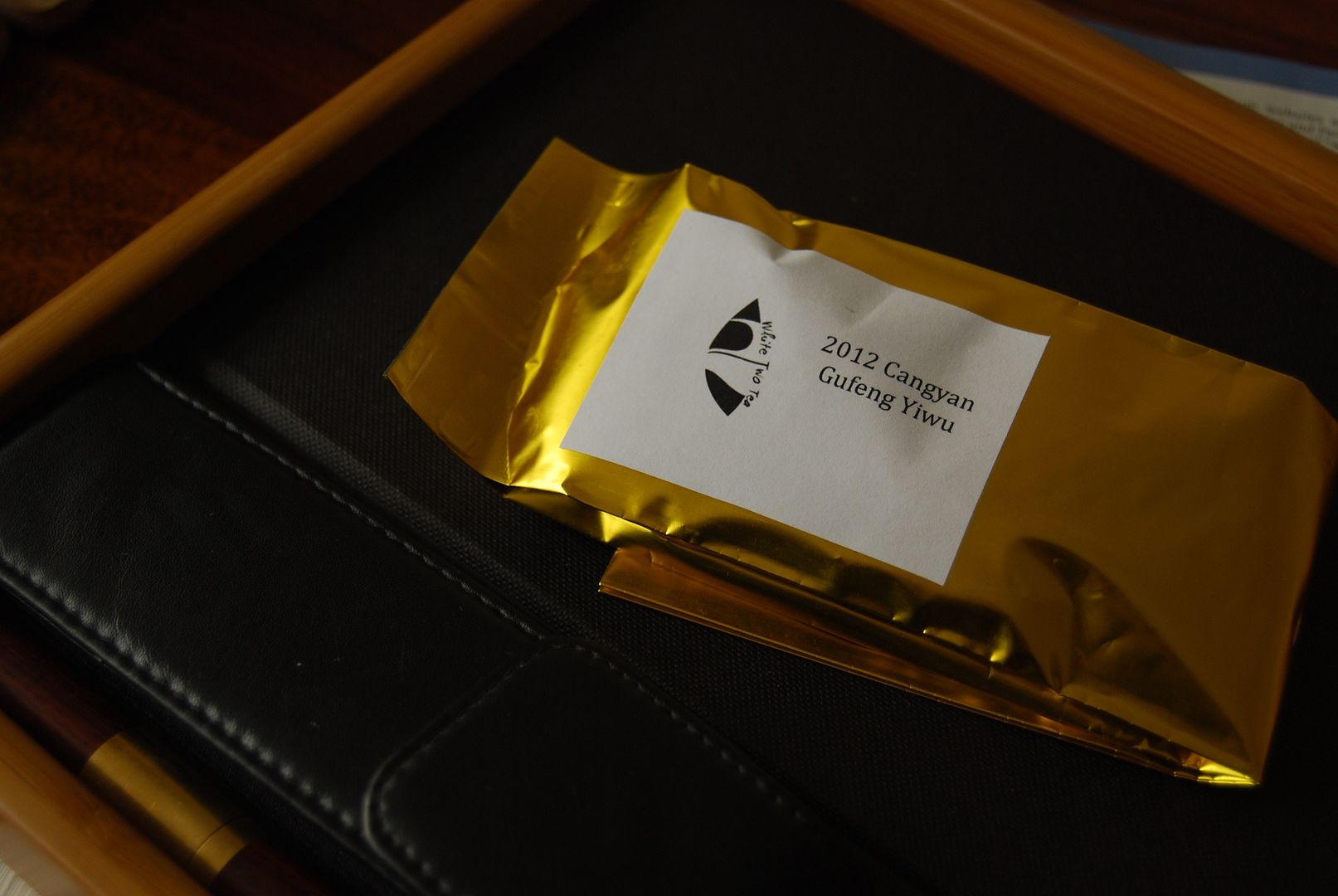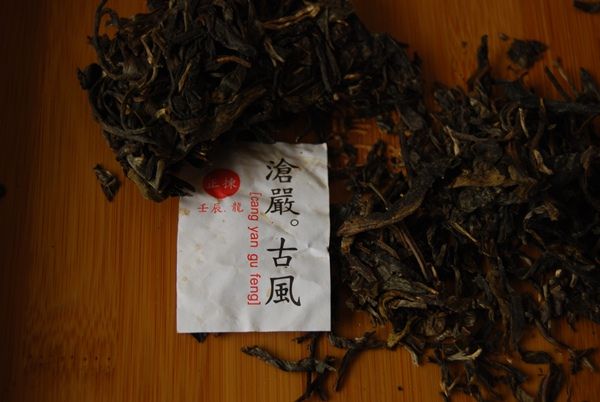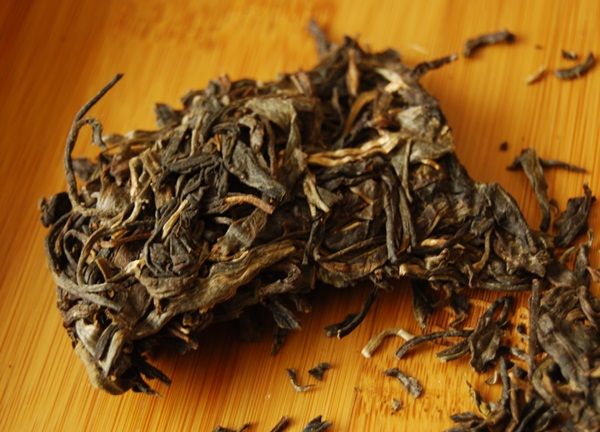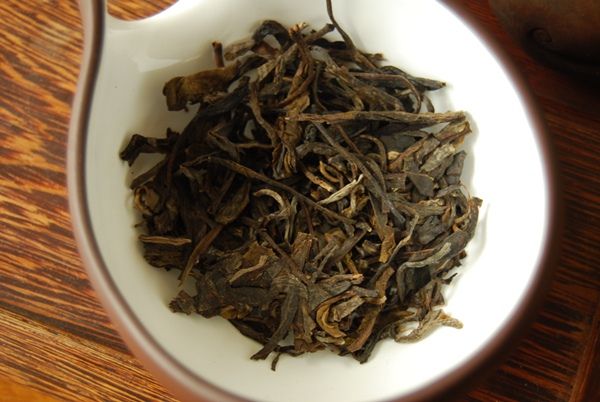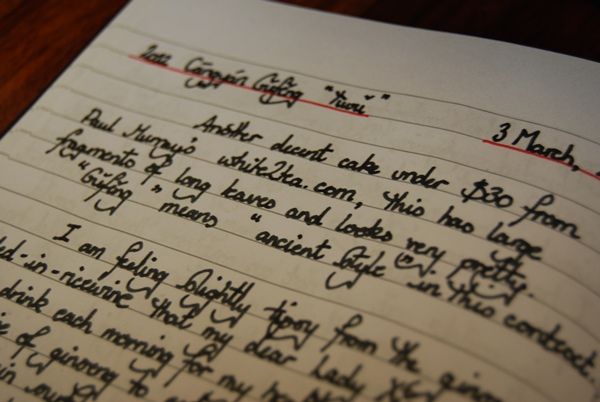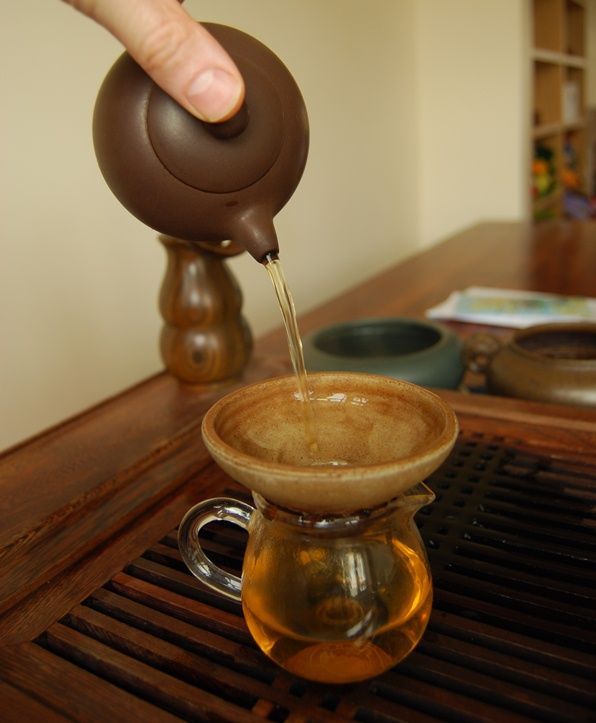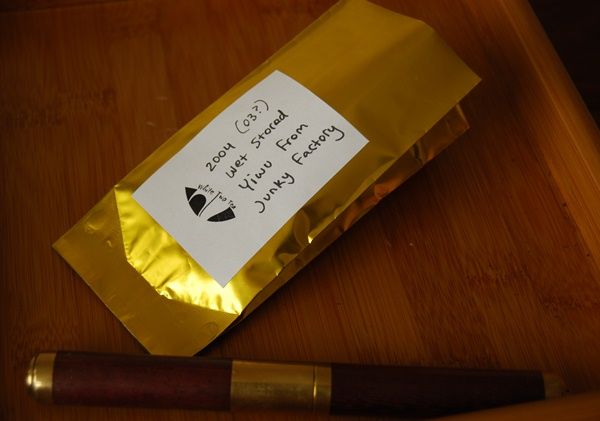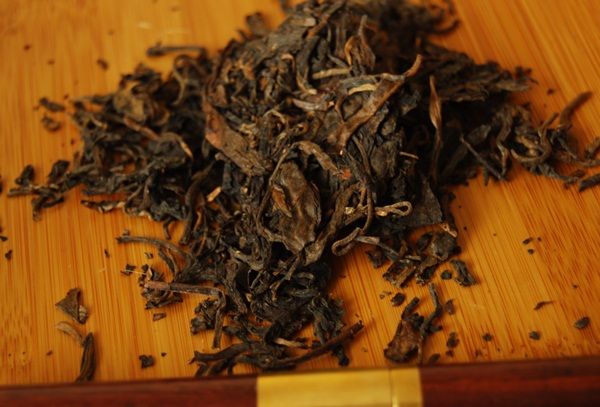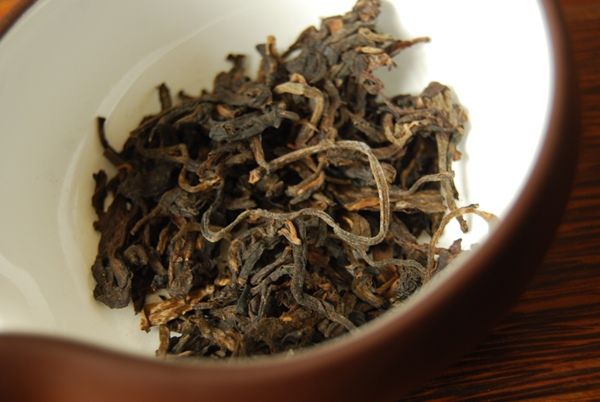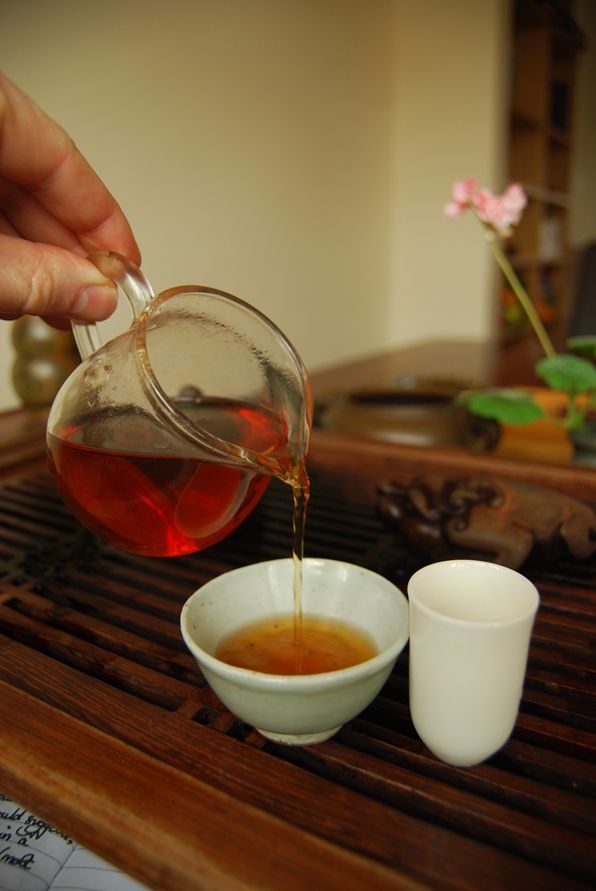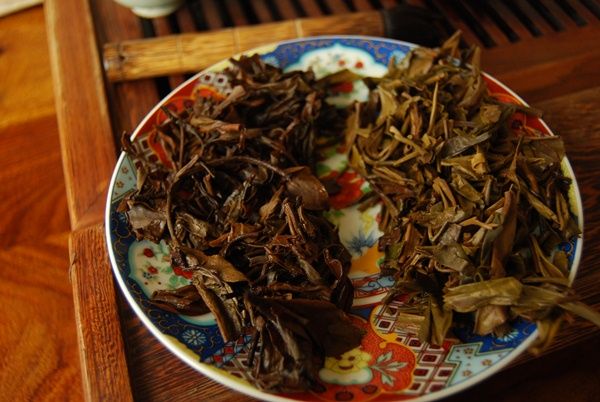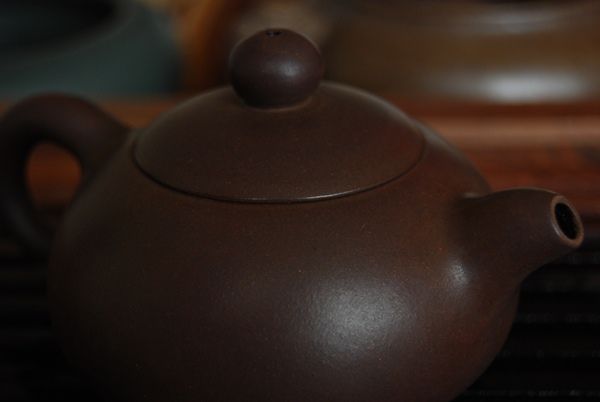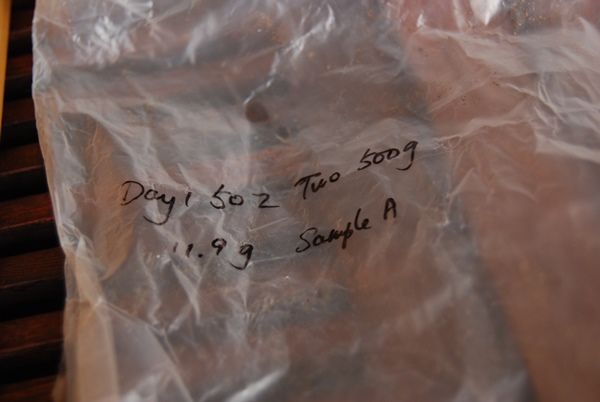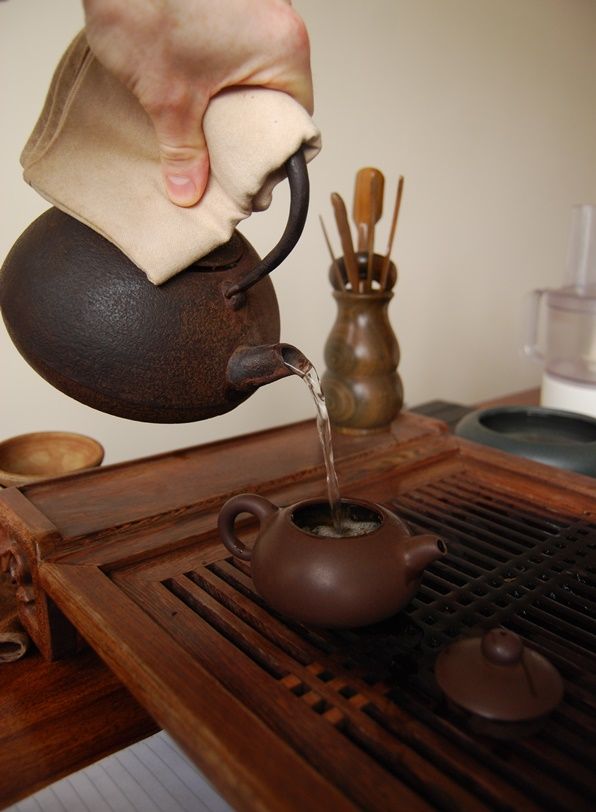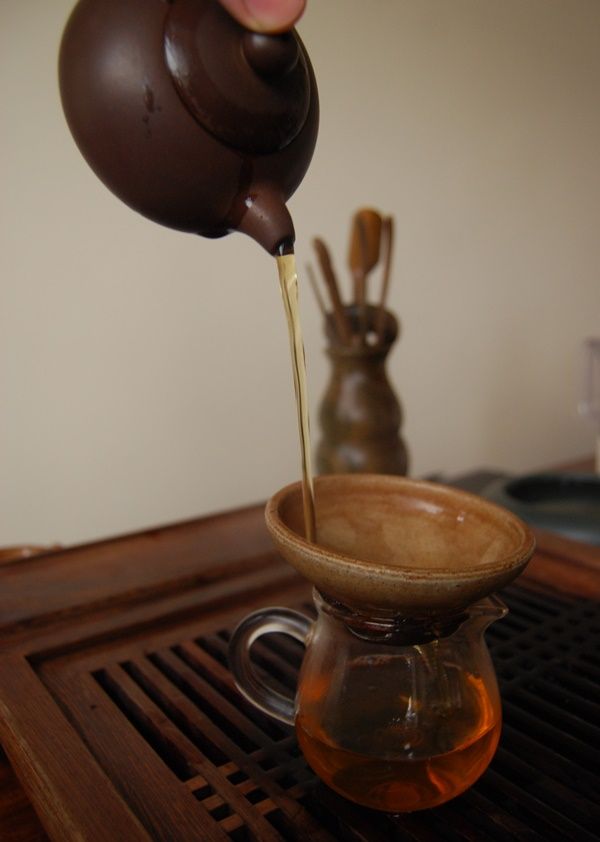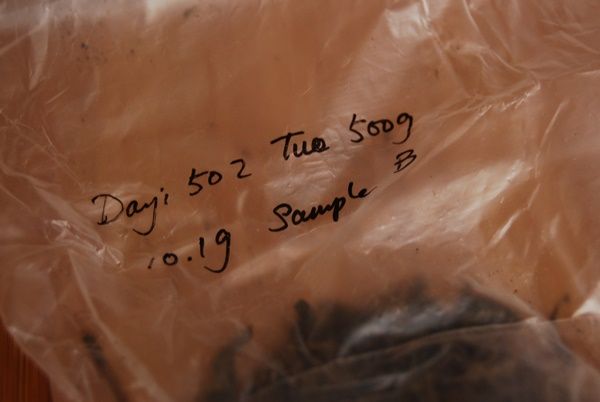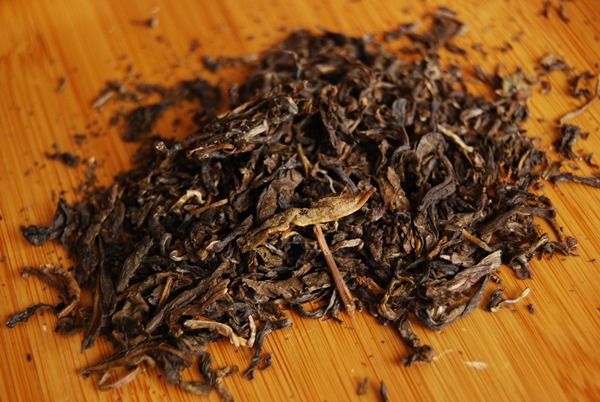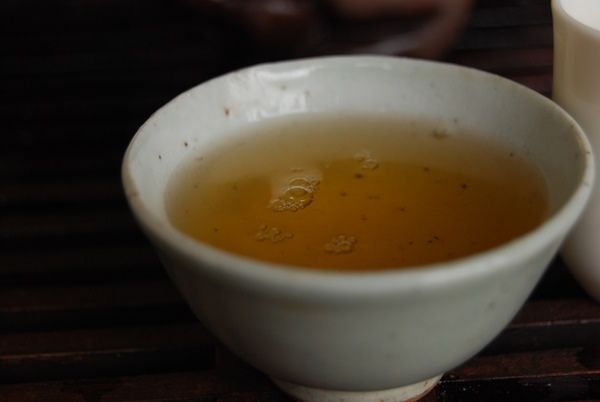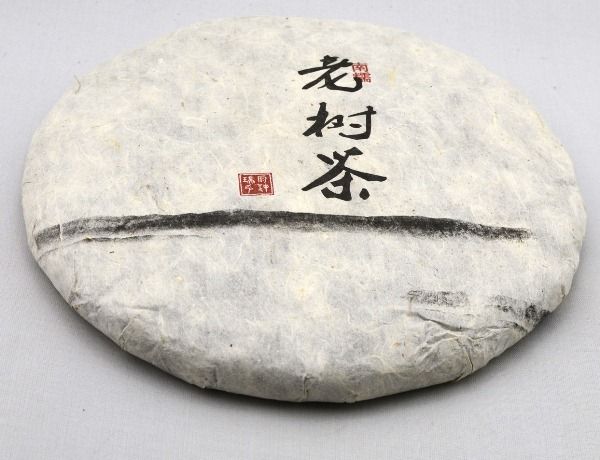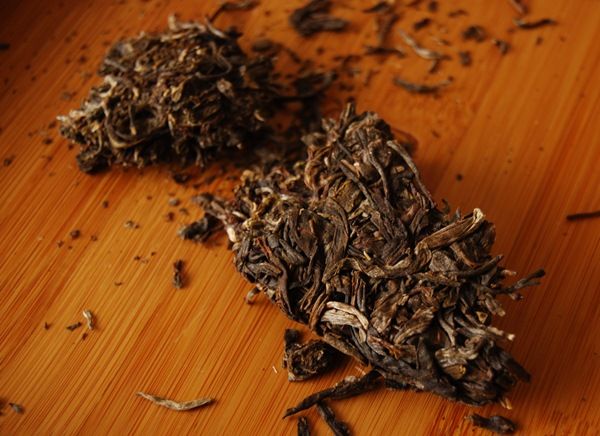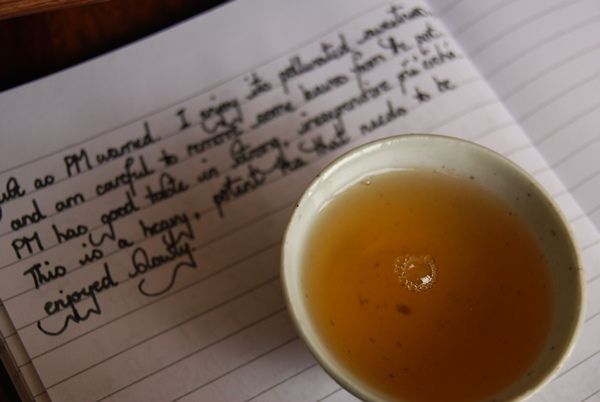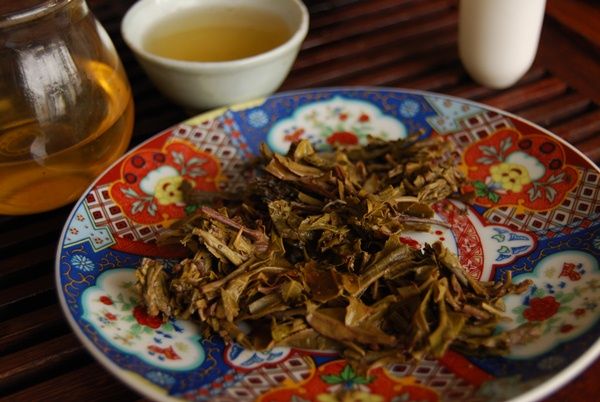Rule Number One when encountering a strangely-packaged tin of pu'ercha is usually: run a mile.
In the case of that tin containing small tuocha or, in this case, little squares of tea, the advice should be: run two miles.
However, you would be doing yourself a disservice if you did not keep an open mind in this instance, because, as we shall see, this pu'ercha that looks so stereotypically dreadful turns out to be really rather good.
The little "chocolate cubes" come apart with a snap, and the tiny leaves give no hint, in either appearance or scent, as to the final result.
Interestingly, I wonder if Douji has a significant market elsewhere in Asia - as shown below, one half of the text is in what appears to be another script.
The bricks are a 5x3 matrix, each weighing 6g, giving a total of 90g in the Xiaojinzhuan [little golden brick]. Unlike most "nibbles", such as the usually-grim mini-tuocha or mini-bricks mentioned before, these do give off a clean, sweet scent once they have sat in the air for a little while. "It smells like real tea", I have in my journal.
Likewise, the wenxiangbei [aroma cup] has the warm scent of real pu'ercha, which is something of a pleasant surprise. My previous experience with "convenience pu'ercha" of this kind has been of the grass cuttings and plantation variety.
I expect the first infusion to be underpowered, due to the tight compression which causes the leaves to take a few brews to separate. However, it is good right from the off: the soup is yellow (turning orange in the air, as pictured above), and the brew is penetrating, sweet, and surprisingly cooling.
Jerry was kind enough to send me this little box on its own, in a package after a recent batch of Douji samples that he knows I usually enjoy. The quality of this convenience tea really rather took me by surprise: it is lively, vivid, creamy (in the manner of many Douji blends), and worthwhile.
This looks like a tea that was born to travel, and perhaps I shall take it on my forthcoming round of academic visits. 2013 seems to have a grim mixture of Paris, Beijing, Qatar, Osaka, and Brunei lined up, and so I suspect this Little Gold Brick will be as exhausted as I will be at the end of it.

